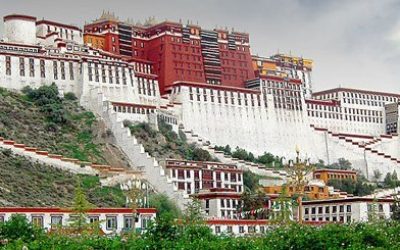Tibet spans the world’s largest and, with average heights of over 4,000 m, also the world’s highest plateau. The Tibetan Plateau also spans most Qinghai, western Sichuan provice, northern Yunnan, and lastly southwestern Gansu. Consequently, Tibet is often referred to as the “Roof of the World”. Parts of the region (northwestern region) are so remote they remain uninhabited to this day. The Tibetan plateau is bounded by two mighty ranges, where Himalayan range consist of the world highest peak Mt.Everest situates from south to west and Thanggula ranges in the north, alpine terrain conditions severe, dry and continental climate in Tibet, with strong winds, low humidity, a rarified atmosphere and a huge fluctuation in annual and summer daytime temperature. The Tibetan plateau is exposed to an unhampered cool arctic air from the north; while the southern tropical and equatorial air masses barely penetrate the Himalayan barrier into Central Asia. The strong heating of the earth surface during the summer months and the freezing in winter produces clear seasonal variations in atmospheric circulation and enhances the role of local centers of atmospheric activity, so the climate and weather in Tibet is very changeable.
TIBET
Tibet Tour Packages
09 NIGHTS / 10 DAYS
India Tour Packages
Holiday Inspirations
Useful Links
Contact Us
Exotique Expeditions Pvt. Ltd.
Suite No 207 RG Complex, Plot-08, Central Market Sector-05, Dwarka
New Delhi 110075
INDIA
Phone : +(91-11) 42730400
WhatsApp: +91-8800222776
CIN : U63040DL2003PTC120106 GSTIN: 07AABCE2211M1ZX
Suite No 207 RG Complex, Plot-08, Central Market Sector-05, Dwarka
New Delhi 110075
INDIA
Phone : +(91-11) 42730400
WhatsApp: +91-8800222776
CIN : U63040DL2003PTC120106 GSTIN: 07AABCE2211M1ZX

 Fixed Departure
Fixed Departure
